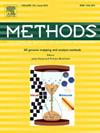肿瘤蛋白-金属结合的可解释多模式学习:进展、挑战和前景。
IF 4.3
3区 生物学
Q1 BIOCHEMICAL RESEARCH METHODS
引用次数: 0
摘要
在癌症治疗中,蛋白质-金属结合机制对药物的药代动力学和靶向疗效起着至关重要的作用,从而从根本上决定了抗癌金属药物的合理设计。虽然用于研究此类机制的传统实验室方法通常成本高,吞吐量低,并且在捕获动态生物过程方面受到限制,但机器学习(ML)已成为一种有前途的替代方法。尽管越来越多的人致力于开发蛋白质-金属结合数据集和ML算法,但ML在肿瘤蛋白质-金属结合中的应用仍然有限。主要挑战包括缺乏高质量的肿瘤特异性数据集,对多种数据模式的考虑不足,以及由于复杂ML模型的“黑箱”性质而导致解释结果的复杂性。本文总结了利用机器学习预测肿瘤蛋白-金属结合的最新进展和面临的挑战,重点是数据、建模和可解释性。我们提出了多模态蛋白质-金属结合数据集,并概述了获取、管理和预处理这些数据集用于训练ML模型的策略。此外,我们还探讨了不同数据模式提供的互补价值,并研究了它们整合的方法。我们还回顾了提高模型可解释性的方法,以支持癌症研究中更可靠的决策。最后,我们提出了我们对研究机会的看法,并提出了解决肿瘤蛋白质数据稀缺和肿瘤蛋白质-金属结合预测模型数量有限的策略。我们还强调了有效的基于金属的药物设计的两个有希望的方向:整合蛋白质-蛋白质相互作用数据以提供金属结合事件的结构见解和预测金属结合后肿瘤蛋白的结构变化。本文章由计算机程序翻译,如有差异,请以英文原文为准。
Interpretable multimodal learning for tumor protein-metal binding: Progress, challenges, and perspectives
In cancer therapeutics, protein-metal binding mechanisms critically govern the pharmacokinetics and targeting efficacy of drugs, thereby fundamentally shaping the rational design of anticancer metallodrugs. While conventional laboratory methods used to study such mechanisms are often costly, low throughput, and limited in capturing dynamic biological processes, machine learning (ML) has emerged as a promising alternative. Despite increasing efforts to develop protein-metal binding datasets and ML algorithms, the application of ML in tumor protein-metal binding remains limited. Key challenges include a shortage of high-quality, tumor-specific datasets, insufficient consideration of multiple data modalities, and the complexity of interpreting results due to the “black box” nature of complex ML models. This paper summarizes recent progress and ongoing challenges in using ML to predict tumor protein-metal binding, focusing on data, modeling, and interpretability. We present multimodal protein-metal binding datasets and outline strategies for acquiring, curating, and preprocessing them for training ML models. Moreover, we explore the complementary value provided by different data modalities and examine methods for their integration. We also review approaches for improving model interpretability to support more trustworthy decisions in cancer research. Finally, we offer our perspective on research opportunities and propose strategies to address the scarcity of tumor protein data and the limited number of predictive models for tumor protein-metal binding. We also highlight two promising directions for effective metal-based drug design: integrating protein-protein interaction data to provide structural insights into metal-binding events and predicting structural changes in tumor proteins after metal binding.
求助全文
通过发布文献求助,成功后即可免费获取论文全文。
去求助
来源期刊

Methods
生物-生化研究方法
CiteScore
9.80
自引率
2.10%
发文量
222
审稿时长
11.3 weeks
期刊介绍:
Methods focuses on rapidly developing techniques in the experimental biological and medical sciences.
Each topical issue, organized by a guest editor who is an expert in the area covered, consists solely of invited quality articles by specialist authors, many of them reviews. Issues are devoted to specific technical approaches with emphasis on clear detailed descriptions of protocols that allow them to be reproduced easily. The background information provided enables researchers to understand the principles underlying the methods; other helpful sections include comparisons of alternative methods giving the advantages and disadvantages of particular methods, guidance on avoiding potential pitfalls, and suggestions for troubleshooting.
 求助内容:
求助内容: 应助结果提醒方式:
应助结果提醒方式:


